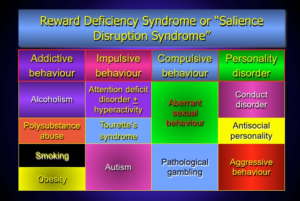Understanding massage therapy

Understanding massage therapy is of the great concern or benefits about understanding massage therapy is that the act of massage increases body awareness, promotes relaxation
Understanding massage therapy: What is massage therapy?
Of the great concern or benefits about understanding massage therapy is that the act of massage increases body awareness, promotes relaxation, and decreases muscle fatigue and strain, which complements the therapeutic process. Doctor Dalal Akoury MD, agrees that as part of an integrative treatment approach, a massage therapy may be recommended by medical providers when it is deemed to be clinically suitable. And before you can allow anyone to exercise this on you, it is important to take note that massage therapists are licensed professionals who only strive to maintain the highest standards of continued education and professionalism. That only tells you that when opting for massage, you must know how qualified the therapist is. In regards to that, at AWAREmed Health and Wellness Resource Center, all we do is to offer the very best to all our clients.
Doctor Akoury and her team of experienced and qualified specialist in various medical discipline will attend to you professionally and have all your addiction concerns addressed effectively and timely. In the meantime it is worth noting that massage is generally considered part of complementary and alternative medicine. It’s increasingly being offered along with standard treatment for a wide range of medical conditions and disorders. Massage is a general term for pressing, rubbing and manipulating your skin, muscles, tendons and ligaments. Massage therapists typically use their hands and fingers for massage but may also use their forearms, elbows and even feet. Massage may range from light stroking to deep pressure techniques. And that brings us to the many different types of massage which may include the following:
- Swedish massage
- Deep tissue massage
- Sports massage
- Trigger point massage
- Reflexology
- Warm stone massage and
- Shiatsu massage
Understanding massage therapy: What is massage therapy?
All these and many more will be awaiting for you from the moment your call of appointment goes through. So if you need professional help with whatever addiction related condition, speak to us on telephone number 843 213 1480 now.
Physiological and psychological changes
Massage as a healing tool has been around for thousands of years in many cultures. Touching is a natural human reaction to pain and stress, and is used for conveying compassion and support. Healers throughout history have developed a wide range of therapeutic techniques using touch. Massage therapy therefore does more than just relaxing your body and mind, physiological and psychological changes occur, even more so when massage is utilized as therapy and not simply as a luxury. Massage therapy can be a powerful tool in the recovery process.
- Decreased anxiety and depression
- Enhanced sleep quality
- Improved circulation
- Improved concentration
- Lowering of blood pressure
- Pain management
- Reduced fatigue
- Stress reduction
Research continues to show enormous healing and therapeutic benefits of touch. Massage therapy is becoming a more integral part of healing and recovery treatment programs. Many studies have actually established that massage therapy helps relieve depression and anxiety. It has also lowered levels of Cortisol by up to 50 percent, and increased levels of neurotransmitters that help reduce depression.
Understanding massage therapy: What is massage therapy?
http://www.awaremednetwork.com/





















